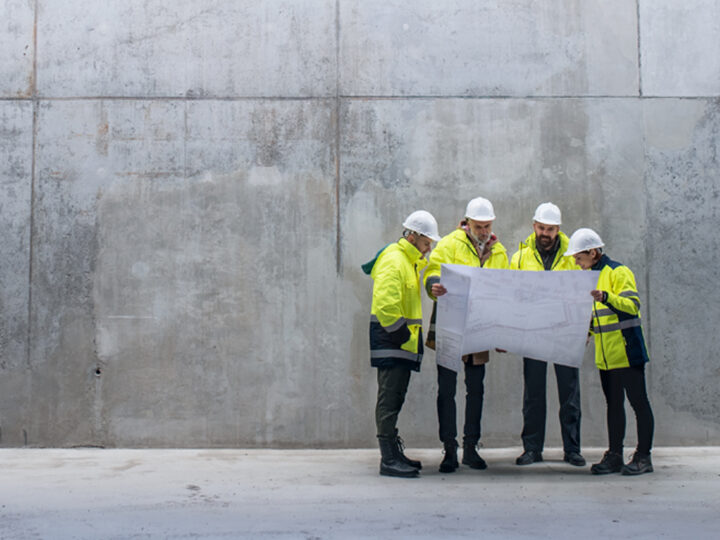
Thoughts on Managing Site Visits
Construction phase services are an important element of any design contract involving construction. Design documents cannot be effectively implemented in a vacuum.
Construction requires a constant exchange of information and decisions that can only be accomplished when the design team is an active participant in the process. Providing an effective construction phase services program starts with a plan that addresses each service element in detail. There is nothing more important to this planning process than making sure that site visits are developed with input from all stakeholders including project owner, the prime design professional, consultants, geotechnical consultant and special inspection function.
Site Visits
Two of the recognized standard design-construction contract forms address site visits in a similar manner:
Engineers Joint Contract Document Committee (EJCDC)
9.02 Visits to Site
A. Engineer will make visits to the Site at intervals appropriate to the various stages of construction as Engineer deems necessary in order to observe, as an experienced and qualified design professional, the progress that has been made and the quality of the various aspects of Contractor’s executed Work. Based on information obtained during such visits and observations, the Engineer, for the benefit of Owner, will determine, in general, if the Work is proceeding in accordance with the Contract Documents. Engineer will not be required to make exhaustive or continuous inspections on the Site to check the quality or quantity of the Work. Engineer’s efforts will be directed toward providing for Owner a greater degree of confidence that the completed Work will conform generally to the Contract Documents. On the basis of such visits and observations, Engineer will keep Owner informed of the progress of the Work and will endeavor to guard Owner against defective Work.
EJCDC C-700 Standard General Conditions of the Construction Contract 2007
American Institute of Architects (AIA)
§ 3.6.2.1 The Architect shall visit the site at intervals appropriate to the stage of construction, or as otherwise required in Section 4.3.3, to become generally familiar with the progress and quality of the portion of the Work completed, and to determine, in general, if the Work observed is being performed in a manner indicating that the Work, when fully completed, will be in accordance with the Contract Documents. However, the Architect shall not be required to make exhaustive or continuous on-site inspections to check the quality or quantity of the Work. On the basis of the site visits, the Architect shall keep the Owner reasonably informed about the progress and quality of the portion of the Work completed, and report to the Owner (1) known deviations from the Contract Documents and from the most recent construction schedule submitted by the Contractor, and (2) defects and deficiencies observed in the Work.
AIA B101 2007 Owner Architect Agreement
As an alternative to Article § 3.6.2.1, the AIA B101 2007 allows for the Owner and Architect to agree on quantities:
§ 4.3.3 The Architect shall provide Construction Phase Services exceeding the limits set forth below as Additional Services. When the limits below are reached, the Architect shall notify the Owner:
- ( ) reviews of each Shop Drawing, Product Data item, sample and similar submittal of the Contractor
- ( ) visits to the site by the Architect over the duration of the Project during construction
- ( ) inspections for any portion of the Work to determine whether such portion of the Work is substantially complete in accordance with the requirements of the Contract Documents
- ( ) inspections for any portion of the Work to determine final completion
Of these options, defining quantities is by far the best approach. In doing so, a reasonable price for site visits can be developed as a piece of the overall construction phase fee.
Quantifying Site Visits — Fee Driven vs. Need Driven
Construction phase budgets are commonly established as percentage of the total design fee. This fee-driven approach, however, rarely, if ever, accurately reflects the needs of the project. As a result the default amount of site visits is based on an arbitrary number of visits or a calendar-based frequency. Neither approach, however, is based on project-specific parameters such project complexity, contract timeline and project delivery method. There is a better approach. Develop a site visit plan based on project needs. Here are steps to consider:
Step 1 — Meet with the design team during the development of the fee schedule to specifically address site visits. Use a standard specification listing as a guide. See Exhibit A.
Step 2 — Using available project information, have each team member develop a draft site visit plan based on their professional judgment.
Step 3 — Define a reasonable frequency for contractor progress meetings. Project Owners almost always require the prime design professional‘s attendance at these meetings. Consultant can also expect to attend these meetings at various stages in the construction.
Step 4 — Evaluate whether some site visits can be combined. As an example, a general site visit to evaluate the construction can be performed in conjunction with a pay application review or scheduled contractor progress meeting.
Step 5 — Expect numerous site visits in conjunction with securing the certificate of occupancy and completing punch lists.
Step 6 — Determine which site visits will be covered by general office overhead and those that will be charged to the project.
Step 7 — Present the draft site visit plan to the project owner. Assist the project owner in finalizing the site visit plan. Specifically address the risks associated with deleting any of the visits included in the draft plan.
Step 8 — Prepare meeting notes documenting the decisions that went into establishing the final site plan. Include a copy of the preliminary and final site visit plans. Provide the meeting notes to project owner, consultants, geotechnical engineer and special inspection function.
Step 9 — Follow up with the project owner to assure that they are in agreement.
Step 10 — Include the final site visit plan in all contract(s) for construction. Require contractor(s) to provide reasonable notice of all site visits relating to specific construction activities such a building exterior pre-installation meeting.
Some project owners want to limit construction phase services in an effort to save money. Others simply don’t see the need for the design team to be involved in the construction process at all. In either case, the final decision rests with the project owner. But before any decision is made, they need to understand that limiting construction phase services comes at price. The increased construction risk may far outweigh any cost savings realized by squeezing a few dollars out of the project owner’s overall project budget.







